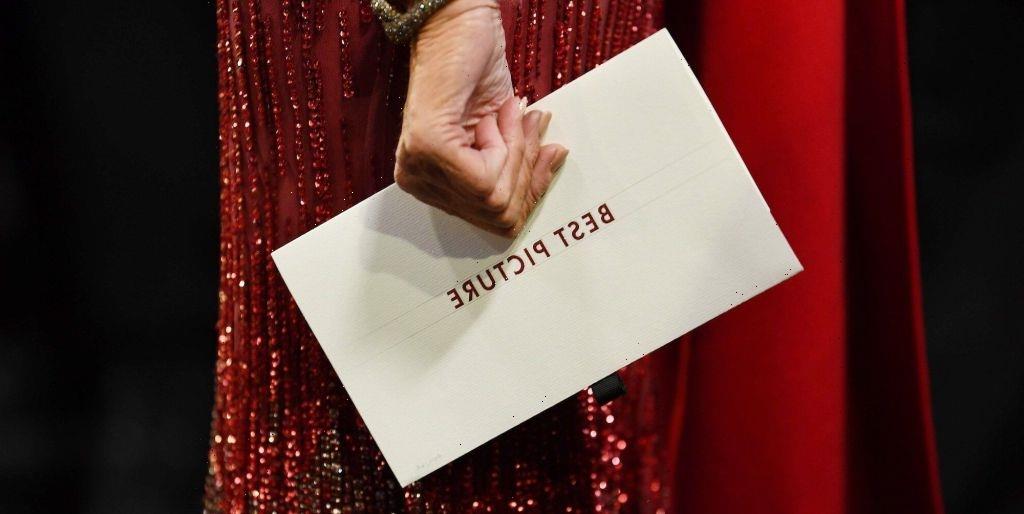Oscar voting is kicking off, and 366 films are vying for the Academy’s attention for best picture, in addition to their selections in their respective branches. One important note to Academy members: Fill out your ballots in full.
Every Academy member votes for best picture, outside of their respective branch association. For best picture, the member is invited to list up to five films in preferential order. In the days of paper ballots, there were horror stories of voters writing the same film five times on their entries, but those days are gone with electronic voting. However, listing five films is crucially important based on the Academy tabulation methods, which involves a lot of math. As we remain in the final year of the “sliding scale,” where the results can produce any number of nominees between five and 10, simply put, all lines matter.
Depending on how many voters participate this year, a mathematical formula determines what is needed to be a best picture nominee. For the sake of understanding, unless you’re John Nash (played by Russell Crowe in the Oscar-winner “A Beautiful Mind”), we’ll label this the “Best Picture Number,” or “BPN.” PwC oversees the entire process. After all the votes are cast, the BPN is determined by dividing the total number of ballots by 11, which is the number of available nominations plus one. Any film that receives an amount of No. 1 votes that surpasses the BPN is automatically a nominee. Believe it or not, based on how many films are released each year, there aren’t always many movies.

Happy Oscars to all those who celebrate.
This year’s race looks all but locked up for A24’s “Everything Everywhere All at Once” but upsets can happen such as “Moonlight” (2016) over “12 Years a Slave,” but how do such upsets occur?
Variety explains.
To help create a visual, let’s use last year’s crop of 2019 best picture nominees: “1917,” “Ford v Ferrari,” “The Irishman,” “Jojo Rabbit,” “Joker,” “Little Women,” “Marriage Story,” “Once Upon a Time in Hollywood” and “Parasite.”
Without knowing for certain, let’s assume four of the films reached a required 50 BPN — “1917,” “The Irishman,” “Joker” and “Parasite.”
The process isn’t over yet. We’re not going to have just four best picture nominees, so now the “Best Picture Surplus” or simply “BPS” rule kicks in. For any film that receives 10% or more of the required BPN needed, the movie listed No. 2 on those ballots receives a percentage of the unneeded votes, depending on how much they surpassed the BPN. For instance, if “Joker” received 100 votes, it only needed a 50, double or 50% over the BPN. On every ballot that included “Joker” in its top spot, the film that was listed number two will now receive 50% of each of “Joker’s” votes. If “Parasite” received 60 votes, then the movies listed in the No. 2 spot will receive 10% of “Parasite’s” votes because it only surpassed by 10 percent. If the No. 2 film is already a best picture nominee or is no longer in the running or didn’t receive any No. 1 votes, then they go to their third choice and so on.
To keep it visual, let’s say after this round of “surplus,” three more films reached the BPN and are now best picture nominees — “Marriage Story” and “Once Upon a Time in Hollywood.” We are now up to six.
The next and final step involves a redistribution, or what we will call “Best Picture Redeployment,” or “BPR,” where any film that did not receive the top spot on fewer than one percent of the ballots are removed from further consideration. We’ll use three of my favorite films of 2019 that weren’t nominated — “Knives Out,” “Us” and “Waves.” Those films are no longer in the running, but every ballot that had listed them as their first or second choice receives their full votes, but now only requires 5% to secure the nomination. Again, if their No. 2 is eliminated, then it goes down to the third listed or whichever highest-ranked film remains “in contention.” If the voter didn’t list a third or fourth choice, they have no more say in the process, highlighting the importance of filling out your ballot completely. If none of the films on their ballots are in the running, then the ballot is removed from the sequence. After this process, we’re going to say we got the three more movies to reach the BPN — “Ford v Ferrari,” “Jojo Rabbit” and “Little Women,” now bringing us to nine in the nominee field.
Under this system, it’s nearly impossible (although fractionally possible) to go through this system and see a field of just five or 10 best picture nominees. This year, based on the spread of the films in play and voters being widely all over the map, I suspect a field of six or seven nominees may be the final result, where we’ve seen eight or nine in preceding years.
Next year, when the Academy goes back to a straight 10 nomination field like in 2009 and 2010, and with AMPAS members listing 10 selections on their ballots, instead of five, you will likely see a greater swath of selections because, after the redeployment stage, you get “cooler,” more innovative choices the further you go down the ballots as seen with nominees like “District 9,” “A Serious Man” and “Toy Story 3.”
The moral of the story is to fill out your AMPAS ballots completely. The movies need it.
Read More About:
Source: Read Full Article


